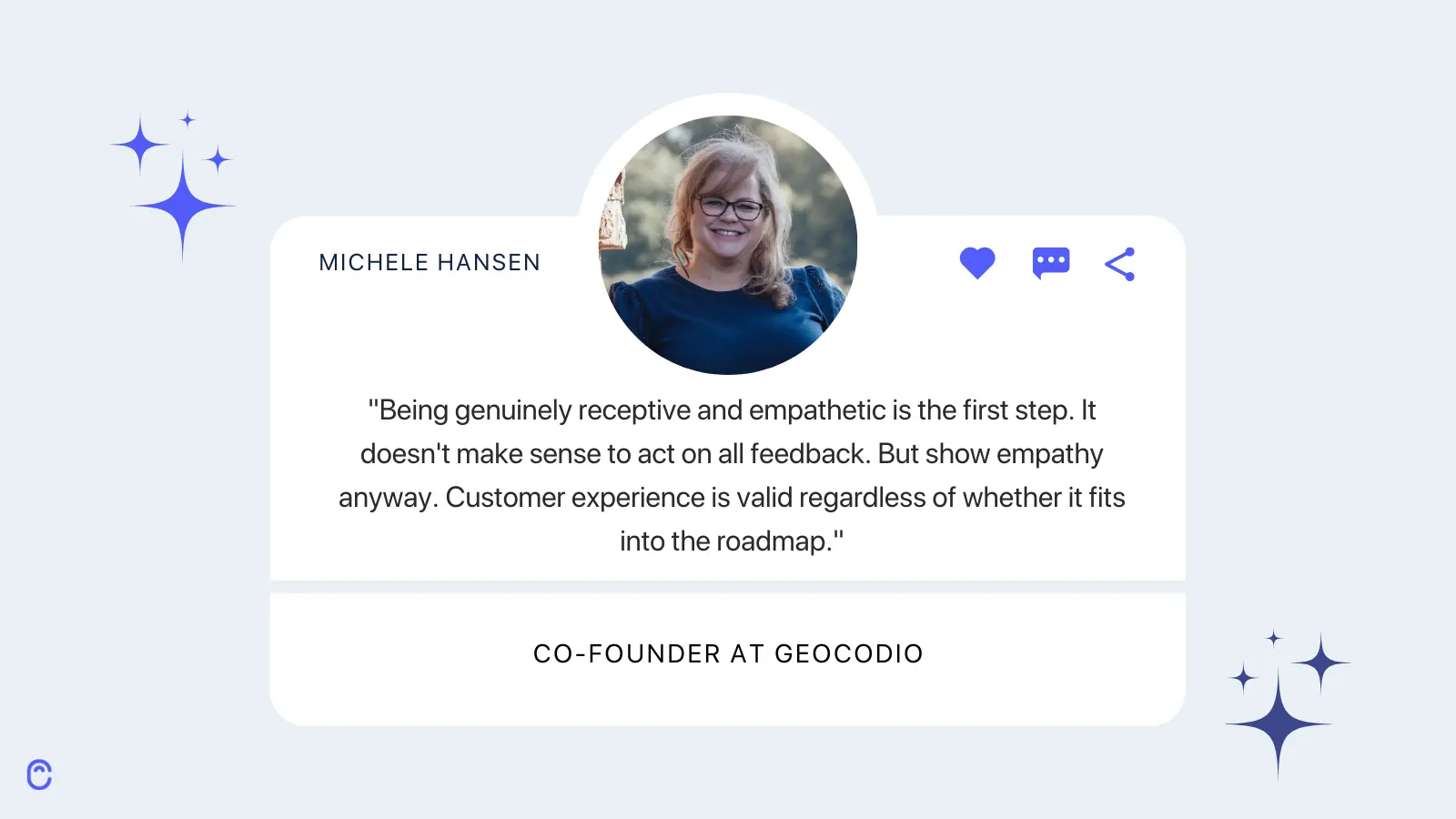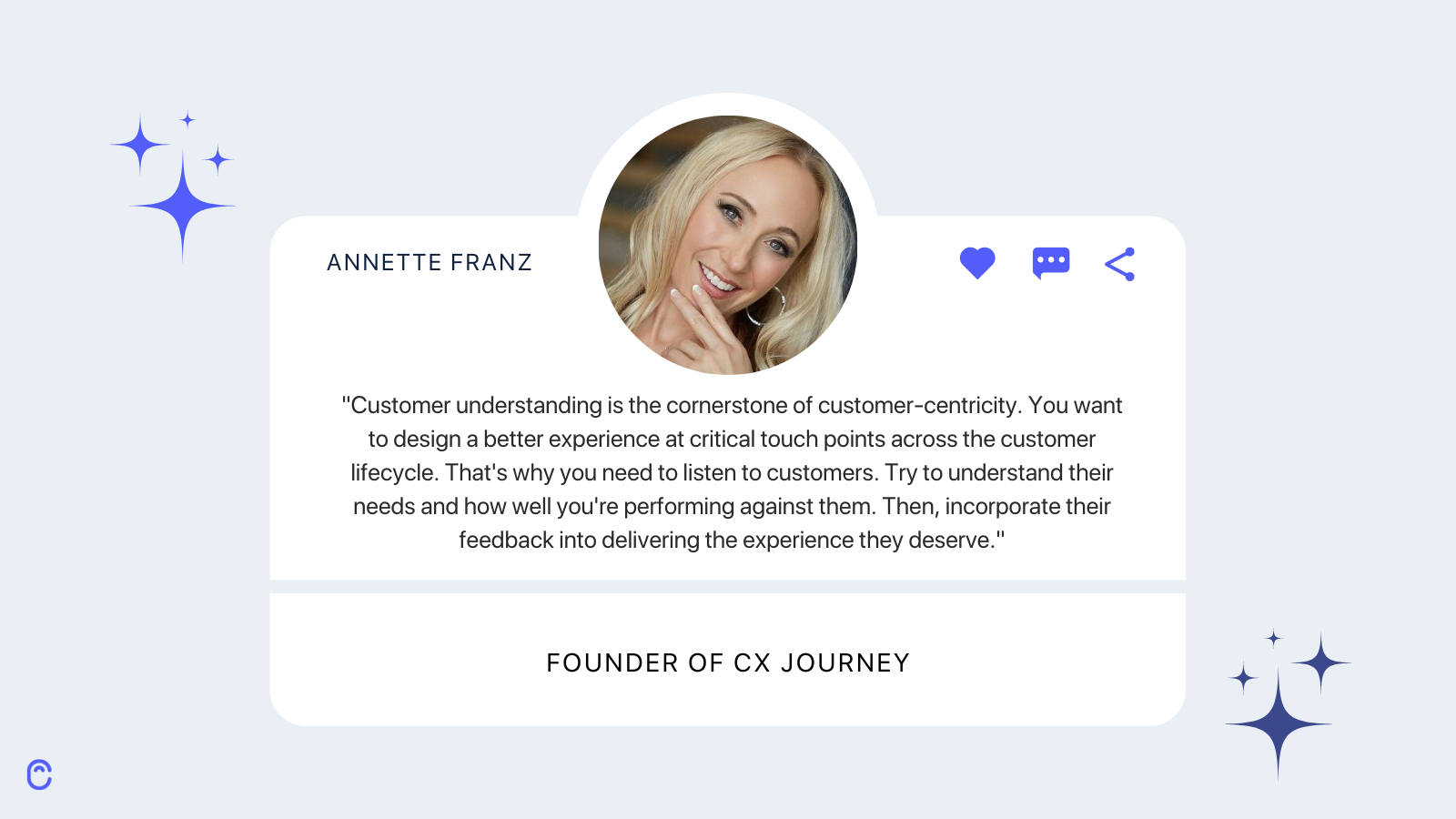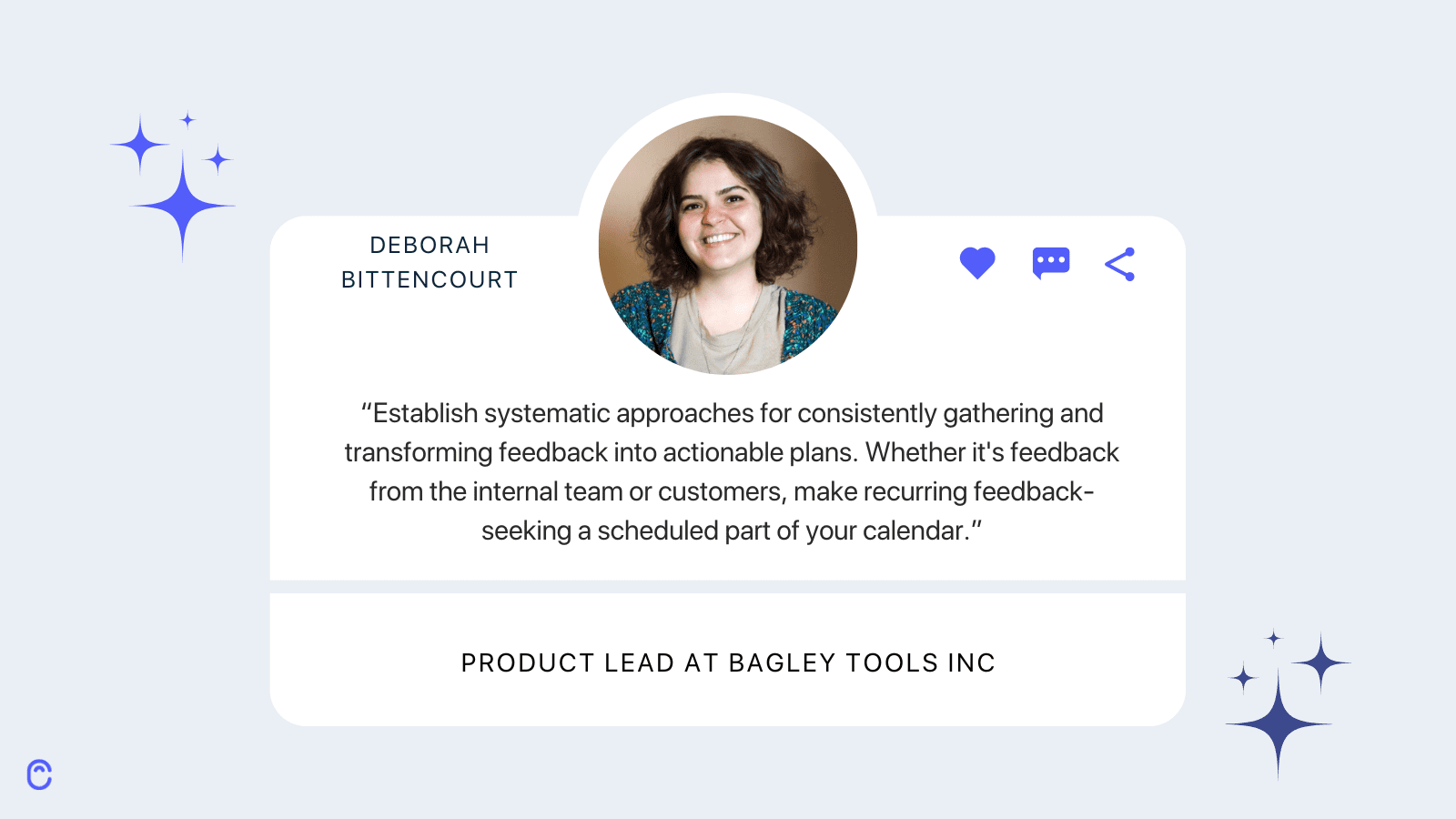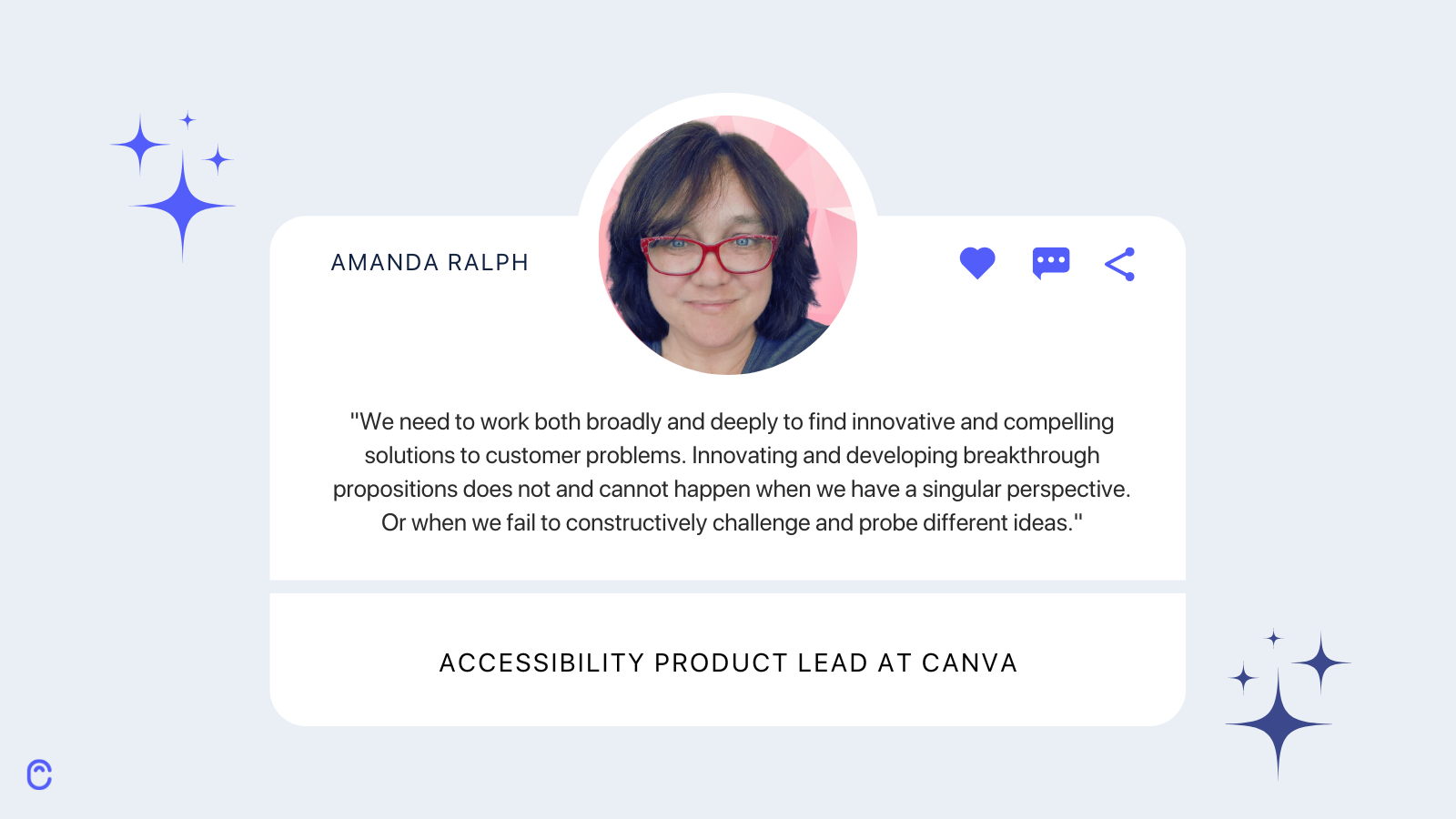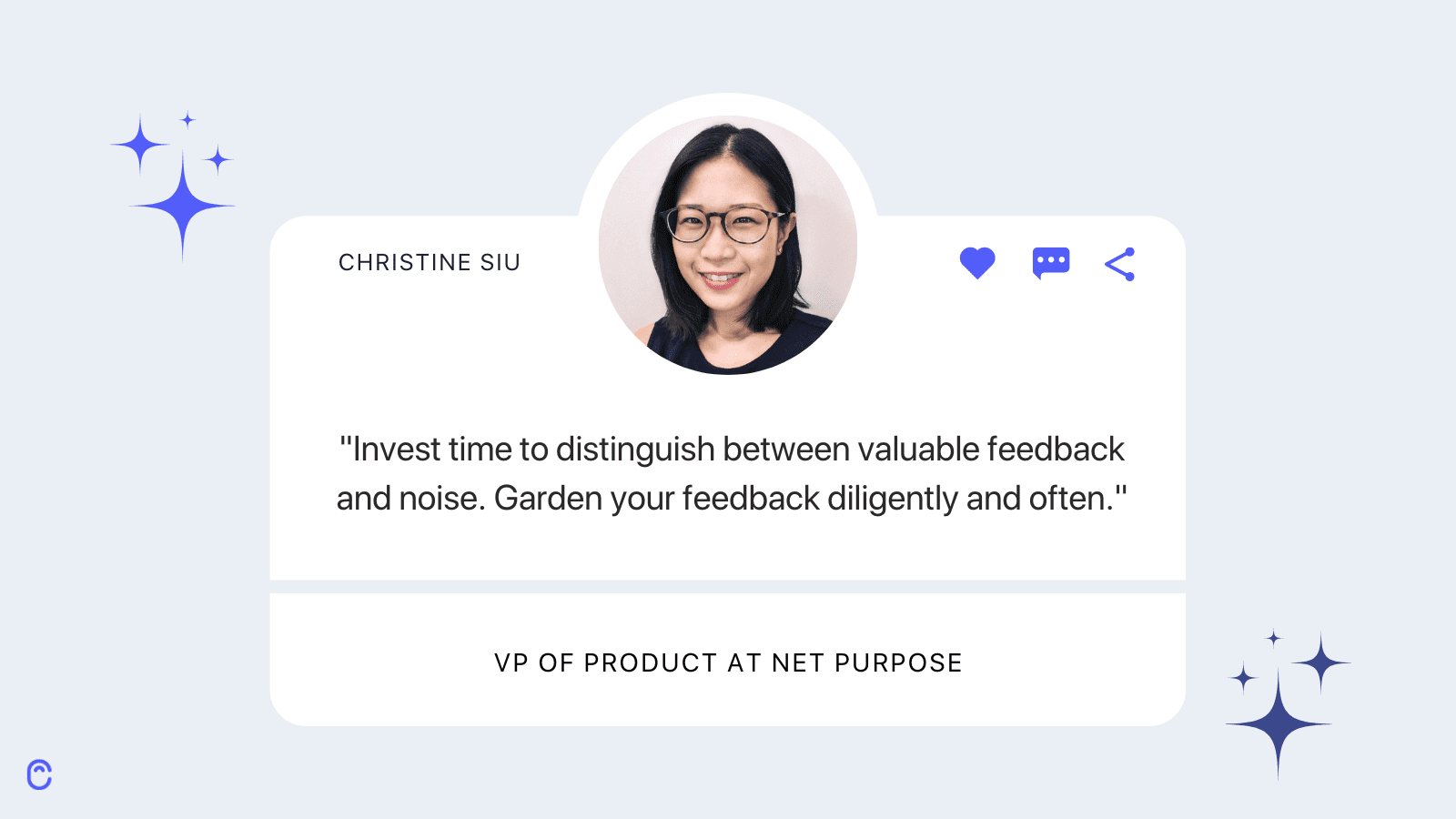Today is International Women’s Day, and we’re focusing on prominent women in product management.
In tech, female voices can get lost. But these female product leaders stand out. They use feedback to make products better and lead by example.
This post guides product managers on enhancing feedback management. We wanted to specifically highlight women in product today.
Let’s see how these 14 women lead the way to success.
Why feedback is important for product managers
First of all, why should you care about feedback? Besides the obvious – pleasing your customers.
Feedback is crucial for product managers – it provides direct insights from users. This information helps develop better products.
Listening to feedback shows managers what to change and which features people love most. This helps decide where to focus efforts.
Feedback helps in fixing problems before they become bigger. It helps pick new features that users want. This way, products keep getting better, and users stay happy.

Collecting feedback effectively
Gathering feedback is crucial. It helps managers understand what customers need and want. This process involves various methods. The goal is to gather a broad spectrum of insights.
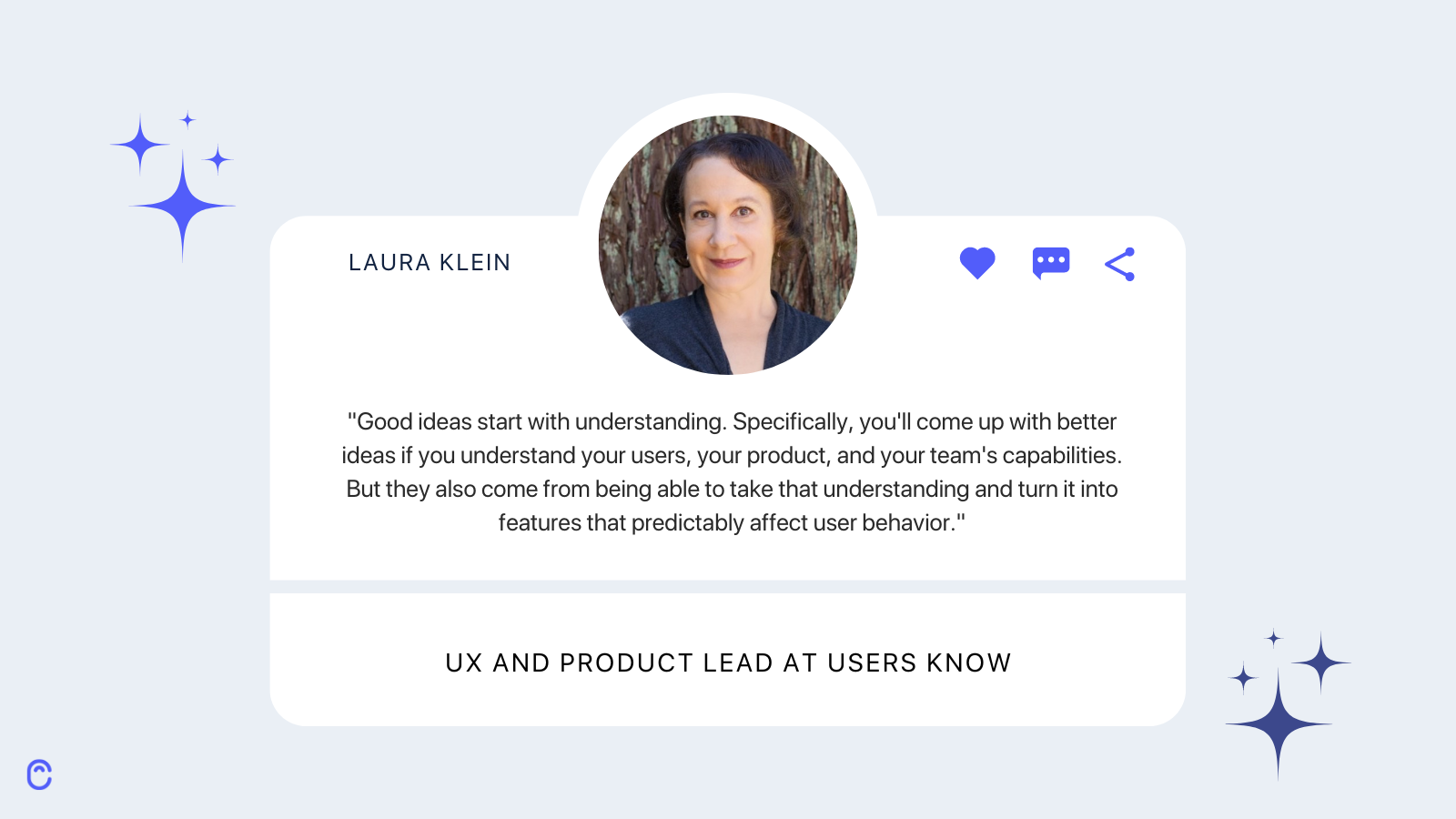
Here’s how product managers can collect feedback effectively.
Surveys
Customer surveys help you quickly gather quantitative data from a large audience. You can collect structured feedback on specific aspects of your product.
“For internal feedback, consider regular 1-1 meetings or distributing surveys every quarter. In terms of user feedback on the product experience, ensure your product incorporates prompts for users to provide feedback. Dedicate time each week to thoughtfully review user feedback and incorporate relevant insights into the product roadmap.”
Deborah Bittencourt, product lead at Bagley Tools Inc
Want to design an effective survey? You need to be clear and concise and, of course, ask the right questions.
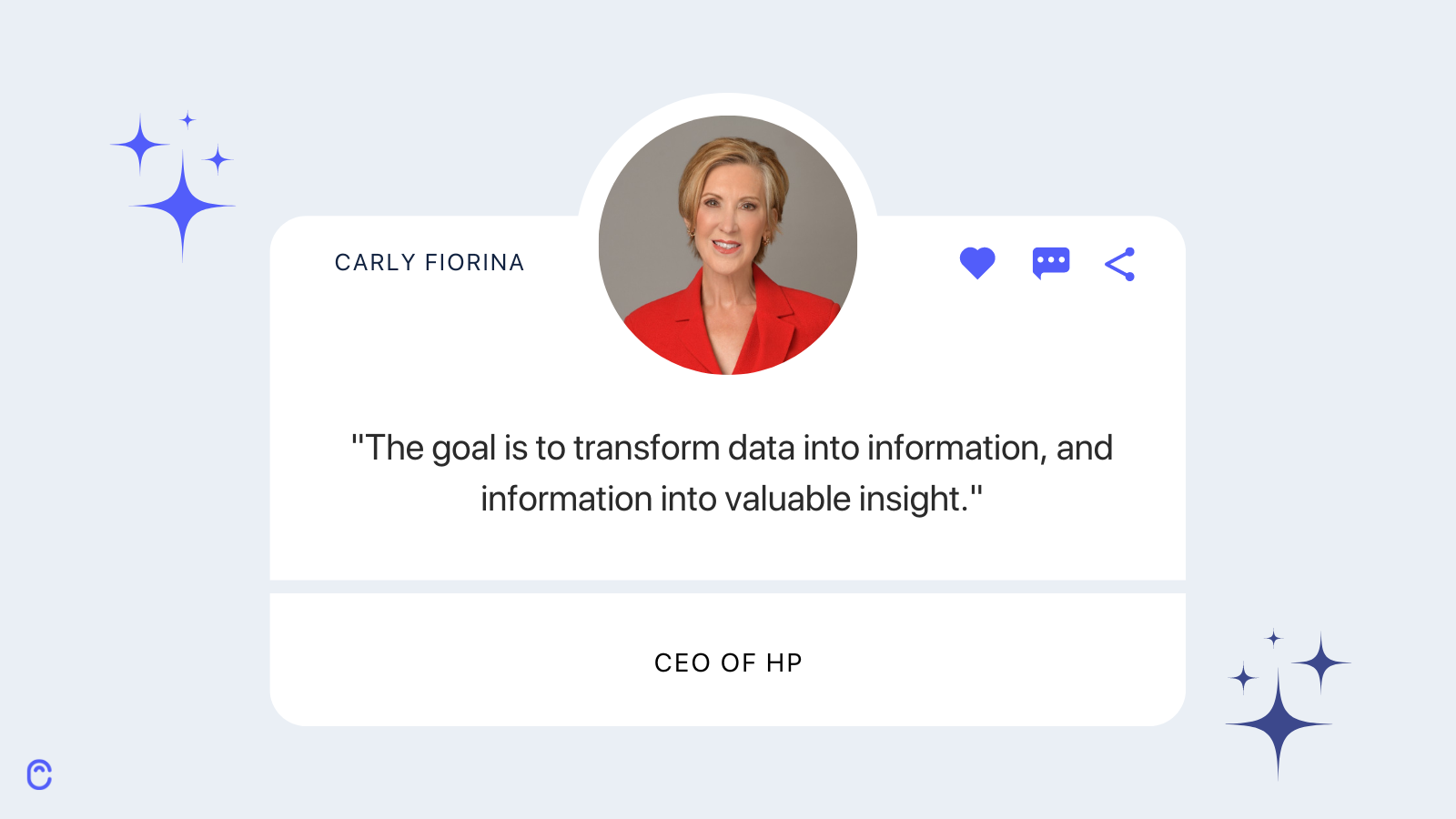
Focus your surveys on product areas that customers actively engage with. You’ll get more actionable insights that way.
Customer interviews
Surveys can’t capture everything. This is where user interviews come in. They uncover qualitative insights that surveys might miss. Surveys also help you understand user experience better. They surface customers’ motivations, challenges, and real thoughts.
Don’t assume you have to do it alone. Involve your team.
“Crowdsource feedback collection for quantity. This is not just the product team’s job. Sales, CS, support, and even engineering can get involved. But make sure you hold the bar high to ensure quality. Set up the structure and train your team to ask better questions. Otherwise, you’ll get noise, and you won’t be able to draw insights from it.”
Christine Siu, VP of product at Net Purpose
Feedback tools
A dedicated customer feedback tool (like Canny) helps product managers centralize and manage user feedback efficiently. Users can submit their feedback inside the product interface. When leaving feedback is that easy, more customers will do it.
This also opens up a discussion, allows for follow-ups, and helps to close the customer feedback loop.
Research
Conduct secondary research to get additional context and insights. Check out:
- Industry reports
- Competitor offerings
- Market trends
Understand the broader market landscape. This will help effectively position your product and find unique value propositions.
Diverse feedback sources = key
Have you found a feedback collection method that works for you? Great! But don’t stop there. Look for more ways to capture user sentiment. You never know what will be the most valuable.
For example, you might only focus on positive feedback. This is an excellent source of motivation, but it does little for your progress.
“Your most unhappy customers are your greatest source of learning.”
Julie Zhuo, co-founder at Sundial
Look inside and outside of your organization. Try to get as much feedback as possible. Only then can you really make conclusions about customer sentiment.
Organizing feedback
After getting feedback, figure out what it means.
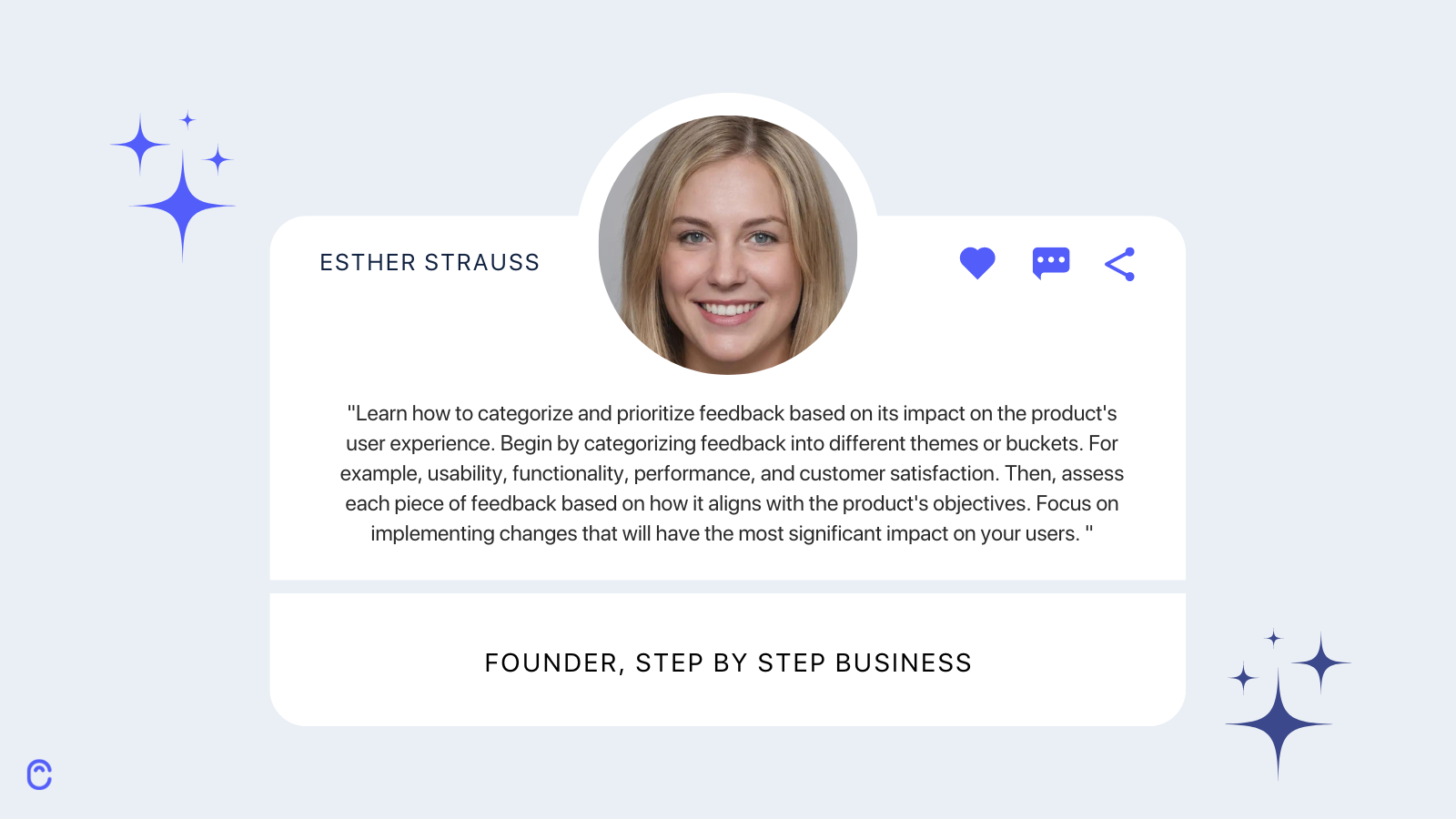
Organizing feedback is a bit like sorting through a big pile of Lego. Imagine each piece of feedback as a different colored Lego. You need to sort them to see what you’ve got and figure out what you can build. So, take all that feedback and sort it by colors or themes. Then decide which feature requests you should act on to make your product better. It’s all about listening, organizing, and then making things better for your users.

A tool like Canny helps you organize all feedback with categories, tags, separate boards, and more.
“You have to be a good steward of actionable feedback. Store and organize it so you can reference and potentially act on it later. For example, for every feature request in your backlog, add links to customer conversations where relevant feedback was shared.”
Michele Hansen, co-founder at Geocodio
Analyzing and prioritizing feedback
Your feedback is now organized. What’s next? Which feature will be the most impactful? Is it the most requested feature? Or the one a very prominent lead asked for?
“When feedback arrives, we need to start with an empathetic and curious mindset. The goal is to understand the context in which that feedback has been delivered. Then, we need to really explore, understand and identify the most valuable problem to solve. It is critical to look for patterns and themes within feedback that we can turn into actionable insights. Those insights refine focus and help deliver the most customer and commercial impact.”
Amanda Ralph, Accessibility Product Lead at Canva
To find answers, analyze your feedback. What patterns can you spot? When users ask for a certain feature, what’s driving them?
“It’s a mistake to conflate success with shipping a large quantity of features.”
Julie Zhuo, co-founder of Sundial
Good product managers know that not all feedback is created equal. Some require immediate action; other feedback can wait.
Some feedback isn’t actionable at all. Try to identify it too.
To do it right, the best PMs follow a structured approach. Which approach exactly? There are lots of options, which is both great and confusing.
Some product managers start by categorizing feedback into themes, like usability or functionality. Then, they weigh the feedback based on factors like:
- Frequency of the comments
- The impact on user experience
- Alignment with the product vision
They always ask: “Will this move us closer to what our users need and our business goals?”
“It is easy to be distracted by the loudest voice in the room and the continuous stream of feedback from many different sources. But we also need to ensure that the team has the focus they need to deliver on existing priorities. We need to make the judgment: does this feedback represent a distraction, or a refinement towards greater success? In the face of feedback, stay curious but stay focused!”Amanda Ralph, Accessibility Product Lead at Canva
If you want to learn more about how to manage feedback, check out this free guide. It breaks down each prioritization technique, gives examples, and helps you choose the best method.
Implementing feedback into product development
After sorting and prioritizing feedback, it’s time to really roll up your sleeves. This is where feedback becomes reality.
First, break down the feedback into clear tasks and add them to your roadmap. Think about how each piece fits into your current work. Ask yourself, “How can I make these changes real? What steps do I need to take?”
Next, talk to your team. Share what you’ve learned from users. Explain why their feedback matters and how it can make your product better. This is your chance to get everyone on the same page and excited about what’s next.
Now, it’s time to start making those changes. But remember, it’s not just about adding new things. Sometimes, it’s about making what you already have even better. And sometimes, some ideas need to wait. That’s okay – your goal is to make the most impact right now.
As you make changes, keep an eye on how they’re doing. Are users happy with the updates? Are they using the new features as you hoped? This is how you know if you’re on the right track. In other words, don’t stop collecting feedback. Continuous feedback is crucial for ongoing improvement. Incorporate feedback collection in your app so you can keep tabs on user experience.

Communicating feedback outcomes
Finally, don’t forget to tell your users about your updates. Let them know you listened and acted on their suggestions. This makes them feel valued and more likely to share their thoughts in the future. A changelog tool can really help automate things here.
Here’s a simple way to close the feedback loop.
- Tell users what changed
Use simple emails or messages in the app to say what you improved because of their feedback. For example, “We made searching easier – just like you asked!” Don’t overwhelm users with those updates, though. A dedicated space for release notes is usually the best.
- Say thanks
Always thank your users for helping you. A simple “thanks” can make them happy and encourage them to keep sharing their ideas.
“The most critical step in truly impressing the customer is to personally follow up with them when their feature requests have been acted on. This follow-up creates tremendous customer goodwill. Very few organizations complete the cycle, yet those that do see a high ROI.”
Michele Hansen, co-founder at Geocodio
- Keep asking for feedback
After you’ve made changes, ask your users if they like them. This shows you really care about their opinions.
Also, watch how users react to the changes. Are they using the new features? Do they seem happier? This helps you know if you did the right thing.
Sometimes, you might want to say a special thanks to someone who gave really helpful feedback. A quick personal message can make a big difference.
Building a feedback-friendly culture
It’s one thing to say: “We love feedback, share your ideas!” You can even install a widget on your site that lets users submit feedback. Those are great first steps.
You can take it even further. When you close the feedback loop (like we explained above), you show that you mean what you say. You take those ideas, and you bring them to life. You deliver on your promises and establish trust.
Put yourself in your customers’ shoes for a second. Let’s say you use a project management tool daily. You’re a happy customer, but there’s one thing that’s really bugging you. If only that was resolved, you’d save up so much time daily.
So, you go and submit that feature request.
Scenario 1: Crickets. You never hear back. Maybe you even discuss this issue on Reddit or Twitter, and other users agree – this is frustrating! If only they could fix it.
Scenario 2: Attention. You get a reply from the app’s team. They thank you for your feedback and promise to keep you updated.
Then you see that your request is getting some traction. Turns out other users agree with you! So they go and upvote your request. Some even leave comments.
Some time passes, and the status of this request changes to “In progress.” Now it gets really interesting. You get a bucket of popcorn, sit back, and watch what happens. You can see the app’s roadmap and estimated delivery date. You get updates from the team on the progress, too.
One day, you wake up to an update in your email. Your feature request is now a real feature! You check it out, and it really works. Thanks to your feedback, the app is better, and so many other users will have a better experience.
Not only did you improve your workflow, but you helped others. And you took part in improving the product you truly love. How good does that feel?
Nothing is stopping you from giving this extraordinary experience to your users. That’s the power of feedback management.
“Companies often treat us as if our experiences, opinions, and suggestions don’t matter. Even if the company claims to care about our feedback. That’s depressing. But it also means that smart organizations have an opportunity. They can stand out and build customer loyalty by putting effort into how they solicit, manage, and follow up on customer feedback.”
Michele Hansen, co-founder at Geocodio
Conclusion: how feedback leads to product success
Feedback shows you what works and what doesn’t in your product. And it never stops. Feedback keeps coming, and you need to continuously manage it.
“Iterating is 80% of Agile. You’ve got to get customer feedback, and you have to iterate. And that’s the whole point – that you’re getting things in front of customers. You’re getting feedback, you’re coming up with new ideas. You’re seeing what you’re right or wrong about. And so you have to build that into the whole process. None of that is easy. If you can do it, it’s a great way to build products.”
Laura Klein, UX and product lead at Users Know
You’re much more likely to succeed when your product decisions are powered by feedback. That’s the point behind customer feedback management.
We hope these remarkable female product leaders inspired you to build better products. Follow our blog for more inspirational ideas like these. Happy International Women’s Day!



